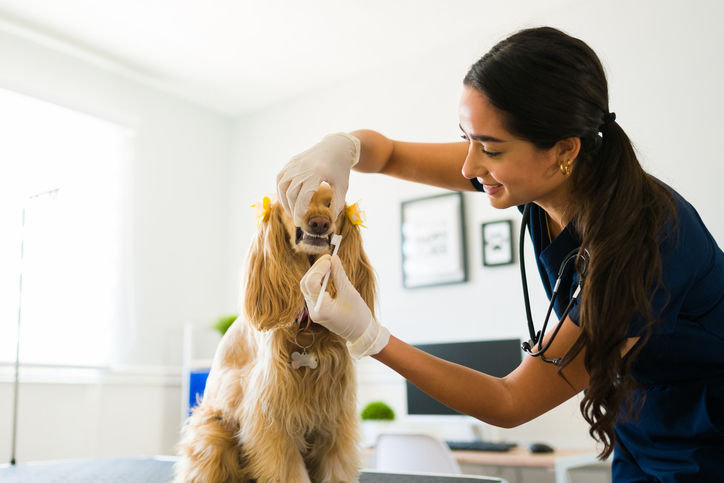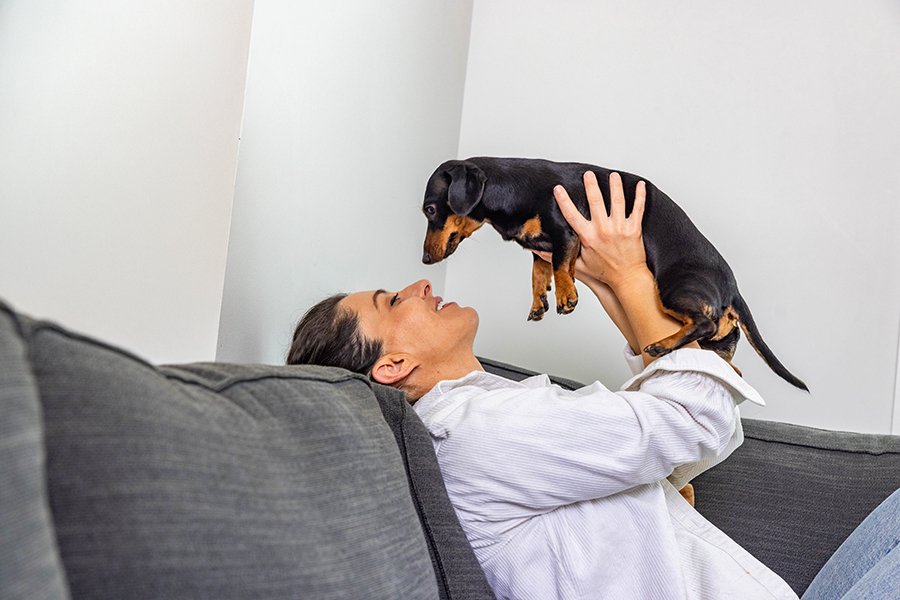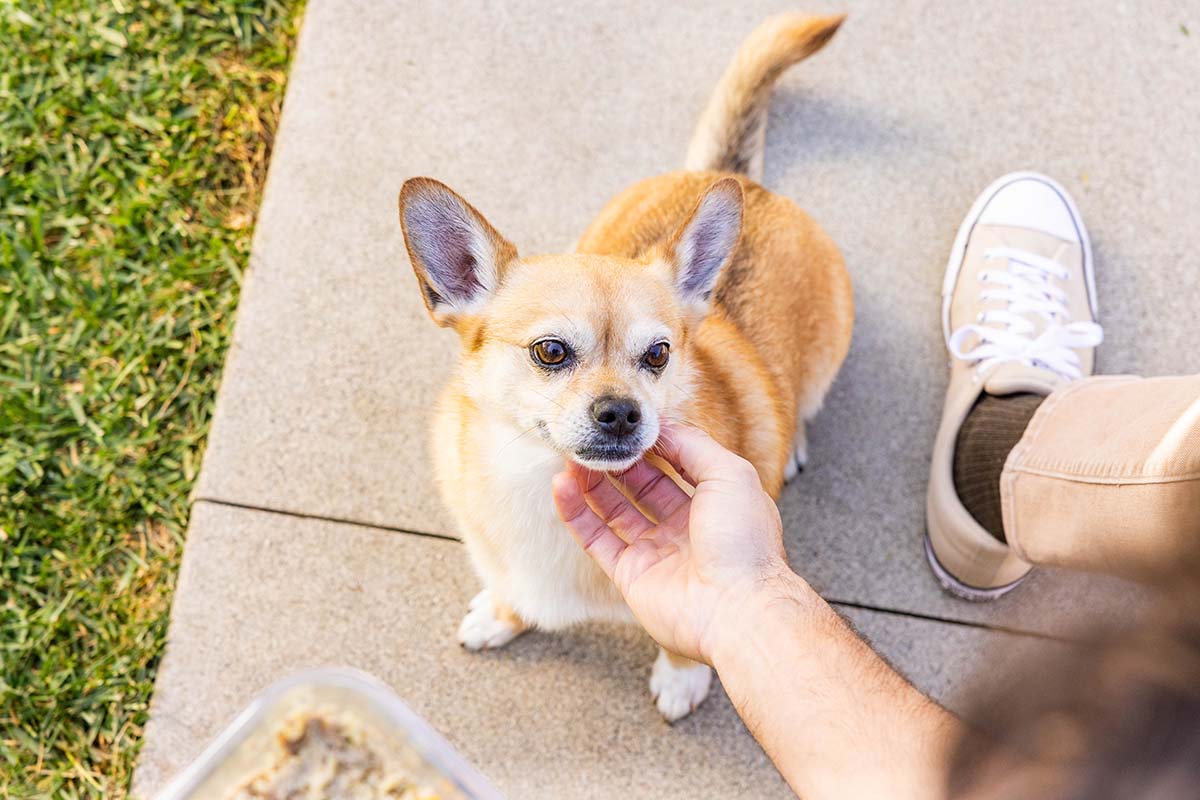Dental Care For Dogs
Dr. Laura Searle-Barnes tells us about the importance of dental care for pets.
Dr. Laura Searle-Barnes tells us about the importance of dental care for pets. Watch the video or read the transcript below.
The Importance of Dental Care For Dogs
“Dental care in pets is one of my passions. I feel very strongly about dental care in pets. I am not a dental specialist but I do spend a lot of time at the seminars that are put on by the dental specialist over in Tustin and again it’s one of those things it’s just a no-brainer.
Teeth care — I mean we go to the hygienists every 6 to 12 months — for dogs every one of their years is eight years of [human years] so we’re seeing six, seven-year-old dogs that are effectively nearly 50 years old, and we’re expecting these pets to live a long, happy, healthy life with a full set of teeth. That’s not probably going to happen unless we do something about it.
So I am a very strong advocate for prophylactic or preventative teeth cleaning and I truly do believe, after all the extra education and curricular activities that I’ve received, is that the only way you can do an effective teeth cleaning to the point where we are removing or preventing periodontal disease is with an anesthetic procedure.
I know a lot of clients have a hard time, still, with putting pets under anesthesia and I absolutely understand it. My dogs are my babies and when they go under anesthesia I feel the same things. I’m human too and I obviously am nervous. However, at the same time I have to weigh out the pros and the cons, do I want my dog’s teeth to never get cleaned and have them be 7, 8 years old and all of a sudden their breath is disgusting they have abscesses in their mouths, teeth are rotting and falling out of their mouths.
Should I Take My Dog To The Dentist?
I can’t even begin to imagine how painful that is. When I get any dental work done I’m the first one to have local anesthetic put in there. I don’t want to be feeling dental pain. So the thought of my dogs going through dental pain all the time going unnoticed and they’re not going to tell me because let’s face it, we don’t really stop eating because we have a cavity. We’ll keep eating or just chew on the other side. It’s going to hurt, but oh well. It just really makes me sad more than anything else and anesthesia is so good nowadays; we do pre-anaesthetic blood work which is something that usually in a human being you don’t even get run on before you go for an anesthetic procedure.
We have a Ziva Fluorine out there now, it is one of the safest anesthetic gasses around; it’s I think one in 10,000 chances of having a complication. So that’s very small in comparison with the risk associated with periodontal disease.
Periodontal Disease In Dogs
Periodontal disease is the silent killer in the veterinary world, you unfortunately are going to have so many things associated with dental disease like liver disease, kidney disease, heart valve disease, the list is endless including inflammatory gut issues. So we have to be thinking more about these preventions now.
There was a very, very large push within the companies that provide non anesthetic dental cleanings and they’re selling it to clients as obviously being safe because there’s no anesthesia involved. Well it’s safe but it really is purely cosmetic procedure so I often have to have these discussions with clients where I really want to put their mind at ease about going under anesthesia. Educating them about the fact that you can’t go into an awake dog or cat’s mouth with an ultrasonic scaler and get underneath those gums which, by the way, is where the periodontal diseases live.
It’s not sitting on the surface of the deep, it’s underneath the gums. That’s where the bad smells are coming from and have them sit there during the process and think that that’s okay because they’re not going to think that’s okay. There are four sides to a tooth: front, back, side to side and those big back teeth in the back. There’s no one going to get to those big back teeth in the back and get underneath those gums in an awake dog anymore and it’s not fair to ask an animal to be awake to do that procedure.
There is a level of discomfort associated with a proper cleaning, I know this and you will probably know this too, so we’re going to put them under anaesthesia. We might not want to wait till there’s a problem to anithaize them and have them be asleep for a long time because now we have to do an extraction or a root canal or a ceiling or something. We’d really rather get them in on a routine basis, clean them up, have them asleep for 20, 30 minutes and then wake them up.
How Often Should I Take My Dog To The Dentist?
The studies now are showing that these pets that we are preventatively cleaning their teeth properly under anesthesia are living 25% longer. If you’re talking about a pug that’s expected to live maybe 12 years, add another 3 years onto your pug’s life. That’s 15 years, which is huge. If I can get three extra years out of my dogs and they’re happy and healthy with no oral pain, I’m going to take it.
So it’s one of those things where I feel like the non anesthetic cleanings are doing people an injustice because they’re not taking the time to educate people that this is purely cosmetic. As nice as those white teeth look, if they’re not healthy underneath the gum line, it’s really doing nothing for the medical benefit of your pet.
Understand as well with the smaller breeds there is a genetic component so you can be at home brushing those teeth every single day and if there’s, you know, overcrowding or malignant or your dog is smaller than 15 pounds, unfortunately genetics is against you and no matter how much brushing or chewing that the dog does at home you’re still going to need that preventative teeth cleaning. That’s something that your vet’s going to be happy to talk to you about and educate you about.”
This content is for informational use only and does not replace professional nutrition and/or medical advice, diagnosis, or treatment. It is not a substitute for and should not be relied upon for specific nutrition and/or medical recommendations. Please talk with your veterinarian about any questions or concerns.








